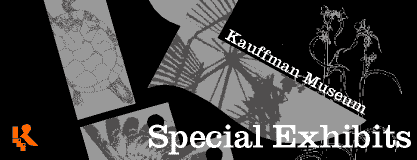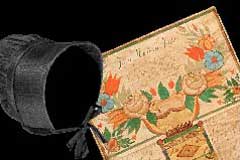

| ---Home |
Exhibition dates:
through May 18, 2014
What does Kauffman Museum collect?
Our collections began in 1896 when students and friends of Bethel College announced the formation of a Museum of Natural History and American Relics. The founding group was proud that Rev. H.R. Voth of Arizona had donated a unique collection of Indian artifacts. They encouraged more contributions—“curious relics, or botanical, zoological or geological specimens.” The first collections were valued for use in teaching.
In 1940 Bethel College invited Charles J. Kauffman of Marion, South Dakota, to bring his personal museum to Kansas. Kauffman’s collections paralleled those of the college: artifacts from American Indian peoples, immigrant Mennonites, and world cultures connected through Christian missions. The combined collections opened to the public in Alumni Hall as Kauffman Museum at Bethel College on March 10, 1941.
Over the next thirty-five years, an open collecting policy led to rapid growth. In 1960 friends of the museum and the Newton Chamber of Commerce raised funds to construct an annex to accommodate the more than thirty thousand artifacts and specimens.
In 1977 the collections went into storage while funding was raised for a new interpretation building to house a freshly designed permanent exhibition “Of Land and People.” In 1987 the Kauffman Museum Association board of directors adopted a collections policy to guide decisions about acquisitions. The policy gives priority to artifacts relating to:
• the Mennonites—their European origins, immigration to the North American Plains
• special collection of Mennonite immigrant furniture
• history of Bethel College—academics, sports, student activities
• cultures with significant Mennonite relationships through mission and relief work
• native Americans, especially the Cheyenne people (Tsistsistas)
• central India, central China, central Africa—Democratic Republic of Congo
• Mennonite history and life
• congregational life
• Mennonite Central Committee
• Civilian Public Service
Recent acquisitions become part of the Kauffman Museum Study Collections which are available by appointment. The museum staff are seeking to make the study collections accessible to the public because we agree with Charles Kauffman’s precept:
“The museum must have a soul. The great things awe us, but it is the little things that touch us.”
Local Exhibition Team
David Kreider, exhibit design & installation
Rachel Pannabecker, artifacts & interpretation
Jocelyn Wilkinson, Bethel College intern
